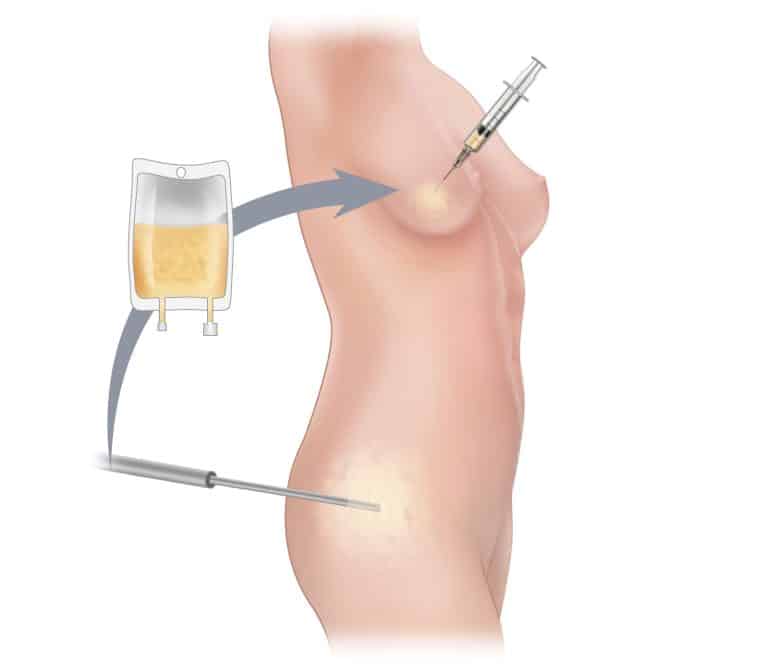Male Body Contouring: Ultimate Guide to Sculpting & Recovery
Understanding Male Body Sculpting
Goals Defined
Male body sculpting, or male body contouring, performed by plastic surgeons, aims to enhance masculine features by reshaping the body through incisions and work related to weight loss. It focuses on defining muscles and reducing fat in targeted areas through male body contouring, utilizing heat techniques by plastic surgeons to manage weight. This process helps achieve a more toned and athletic appearance through male body contouring in a way.
The primary goal is to highlight and define the male physique. It often involves procedures like liposuction or fat grafting. These techniques refine the contours of the body, emphasizing muscle definition.
Trend Growth
In recent years, there’s been a significant shift. More men now seek cosmetic procedures, including male body contouring, to improve their appearance. Body sculpting for men has gained popularity as societal norms evolve. Men are becoming more open about their desires to look their best, including male body contouring.
This growing trend reflects a broader acceptance of cosmetic enhancement, including male body contouring, among men. It breaks down stereotypes, allowing men to pursue their ideal body image without stigma.
Realistic Expectations
Setting realistic expectations is crucial in male body sculpting. Not every man will achieve the same results due to differences in body types and health conditions.
It’s important for individuals to have honest discussions with their surgeons about desired outcomes, including male body contouring. Choosing a qualified surgeon who understands male aesthetics is equally vital. They can ensure that enhancements complement natural masculine features.
Popular Male Body Contouring Methods
Liposuction
Liposuction stands as a traditional approach to male body contouring. It involves surgically removing fat from specific areas, offering immediate results for male body contouring. This method suits men seeking quick changes in their physique. However, it requires downtime for recovery.
For those aiming for a more defined look, high-definition liposuction elevates the game. It meticulously removes fat around muscle groups, revealing an athletic appearance. This technique demands a skilled surgeon but promises striking outcomes.
Non-Invasive Techniques
Non-surgical options have gained traction among men preferring less invasive methods. CoolSculpting leads this category by freezing fat cells without damaging the skin or surrounding tissues. It’s ideal for targeting stubborn fat areas with minimal downtime.
Other non-invasive treatments use heat, ultrasound, or radiofrequency to break down fat cells. These methods offer gradual fat reduction over weeks to months and require multiple sessions.
Comparison
Comparing liposuction and non-invasive techniques highlights key differences. Liposuction provides immediate and dramatic results but comes with surgical risks and recovery time. In contrast, non-invasive methods like CoolSculpting offer a gentler approach with no need for anesthesia or significant downtime.
Both strategies have their place in male body contouring, depending on individual goals and preferences. While liposuction is best for substantial fat removal and sculpting, non-invasive methods suit those seeking subtle improvements without surgery.
Abdominal Male Body Contouring Choices
Etching vs. Liposuction
Abdominal etching and traditional liposuction offer distinct paths towards reshaping the tummy area. While both target excess fat, their approaches differ significantly. Liposuction focuses on removing fat cells from larger areas like the flanks and abdomen. It’s a broad stroke option for reducing love handles and general abdominal fat.
Abdominal etching, however, takes a more detailed approach. This method involves sculpting around the abdominal muscles to enhance their appearance, creating contours that mimic a “six-pack.” It’s specifically designed for those who already maintain a relatively lean physique but struggle with stubborn areas that don’t respond well to exercise alone.
Ideal Candidates
Men aiming for pronounced abdominal contours find etching an attractive option. It suits those close to their ideal body weight, with muscle underneath that isn’t visible due to the overlying fat layer. Importantly, candidates should have realistic expectations and commit to a healthy lifestyle post-procedure to preserve the sculpted look.
Lifestyle Impact
The success of both procedures hinges on maintaining results through diet and exercise. A balanced lifestyle ensures the longevity of the newly sculpted abs. Regular physical activity helps keep the surrounding muscles firm, while a healthy diet prevents new fat deposits from diminishing the definition achieved through contouring.
Gynecomastia Treatment Options
Surgical Removal
Surgical removal targets the glandular tissue responsible for gynecomastia. This method is direct and effective. It involves excising the excess tissue to flatten the chest area. The procedure requires precision and is typically recommended when glandular tissue predominates.
Patients experience immediate results. However, recovery takes time. They must follow post-operative care guidelines closely.
Liposuction
Liposuction addresses fatty tissue contributing to gynecomastia. It’s less invasive compared to surgical removal. This technique suits cases where excess fat, not glandular tissue, forms the bulk of breast enlargement.
The recovery period is shorter. Patients often return to daily activities sooner than with surgical removal.

Evaluation Necessity
A thorough evaluation is crucial before choosing a treatment method. Specialists assess the underlying cause of gynecomastia, considering factors like hormonal imbalances and medication side effects. This step ensures that the chosen treatment aligns with the patient’s specific condition.
Understanding the root cause allows for a tailored approach. It maximizes treatment effectiveness and patient satisfaction.
Flatter Chest Solutions for Gynecomastia
Surgery Details
Male breast reduction surgery targets excess fat and breast tissue. It gives the chest a flatter, more masculine contour. Surgeons typically use liposuction to remove fat. They might also excise tissue if necessary.
The procedure lasts about two hours. Recovery time varies but generally spans a few weeks. Patients should follow their surgeon’s advice closely during this period.
Psychological Benefits
This treatment significantly boosts self-esteem. Men often feel embarrassed by enlarged breasts. A flatter chest helps them regain confidence.
They become more comfortable in social situations. They’re also more likely to engage in physical activities. This positive change impacts their overall well-being.
Post-Op Care
After surgery, wearing a compression garment is crucial. It minimizes swelling and supports healing. Patients must avoid strenuous activities for up to six weeks.
Regular check-ups are necessary to monitor progress. Surgeons provide detailed care instructions tailored to each patient’s needs.
Lifestyle Adjustments
A healthy lifestyle supports optimal results post-surgery. Eating well and exercising regularly are key components. These habits prevent fat from reaccumulating in the chest area.
Patients should also avoid smoking and excessive alcohol consumption. These can hinder the healing process.
Non-Surgical Aesthetic Enhancements for Men
Botox and Fillers
Injectables like Botox and fillers have revolutionized facial rejuvenation for men. Many men seek these treatments to reduce signs of aging without surgery. With a quick visit to a plastic surgeon, patients can see improvements in wrinkles and facial volume loss.
Botox relaxes muscles, smoothing out forehead lines and crow’s feet. Fillers restore lost volume, particularly around the cheeks and jawline. Both procedures require minimal downtime, making them convenient options.
Laser Treatments
Laser technology offers solutions for skin tightening and texture enhancement. These techniques target the deeper layers of the skin, promoting collagen production. Improved skin texture and firmness are visible after just a few sessions.
Lasers can also address specific concerns like acne scars or uneven pigmentation. Patients appreciate the non-invasive nature of laser treatments, as there is little to no recovery time needed.
Convenience Factor
The appeal of non-surgical procedures lies in their convenience and minimal downtime. Unlike surgical procedures that require weeks of recovery, most non-surgical options allow patients to return to daily activities immediately.
Consultations with plastic surgeons help tailor treatments to individual goals. Whether it’s enhancing the appearance of the neck, back, or face, these procedures offer effective results without significant interruption to one’s life.
Recovery Period for Body Sculpting
Surgical Timeline
Recovery from surgical body contouring varies. It often demands several weeks of downtime. Patients should expect a gradual return to daily activities. This period allows the body to heal properly.
Surgical procedures require strict adherence to post-operative instructions. These guidelines minimize complications and speed up recovery.
Non-Surgical Recovery
Non-surgical treatments offer a quicker bounce back. Most patients resume normal activities within a day or two. Unlike surgical options, these enhancements have minimal downtime.
Following the provider’s care advice after non-surgical treatments is crucial too. It ensures the best outcomes and reduces any potential side effects.
Managing Side Effects
Common side effects include swelling, bruising, and discomfort. These are typically temporary but can affect the recovery experience.
Patients can manage these symptoms by following their doctor’s recommendations closely. This might include taking prescribed medication and applying ice packs.
For both surgical and non-surgical body sculpting, the key to a smooth recovery lies in following medical advice closely and allowing oneself enough time to heal. Whether it’s taking a few days off work after a non-invasive procedure or planning for several weeks of rest post-surgery, understanding and preparing for the recovery process is essential.
Timeframe for Male Body Sculpting Results
Realistic Expectations
Setting realistic expectations is crucial after undergoing male body sculpting. Visible results may not be immediate. They often emerge gradually as the body heals.
For surgical procedures, initial improvements might be noticeable within a few weeks. However, the full impact becomes evident as swelling reduces over time. It can take up to six months or more for the final outcome to fully materialize.
Non-surgical treatments usually require patience. Multiple sessions are often necessary to achieve desired results. Each session builds upon the last, with gradual improvements seen over time.
Surgical Evolution
Surgical body sculpting offers transformative changes. Yet, these changes unfold over months rather than days.
In the weeks following surgery, patients may notice a reduction in swelling and a clearer view of their new contours. As the body heals, these results refine and improve, reaching their peak around six months post-procedure.
Non-Surgical Progress
Non-surgical options have their own timeline. Results from treatments like cool sculpting or radiofrequency need time and often multiple sessions.
After each session, the treated area gradually improves. Optimal outcomes usually become visible after several treatments, spaced weeks apart.
Closing Thoughts
Male body contouring offers a variety of solutions tailored to meet your aesthetic goals, whether it’s achieving a more defined abdomen, addressing gynecomastia, or exploring non-surgical enhancements. With the advancements in cosmetic procedures, you have the power to sculpt your physique in ways that align with your vision of self-confidence and appeal. The journey to your ideal body shape involves understanding the options available, considering recovery times, and setting realistic expectations for results. Remember, selecting the right procedure and specialist is crucial in ensuring safety, efficacy, and satisfaction with the outcome.
Now’s the time to take the next step towards enhancing your appearance. Consult with a certified professional who can guide you through the process, tailoring a plan that suits your needs and lifestyle. Your path to a more confident you awaits—embrace it with informed decisions and an optimistic outlook.
Frequently Asked Questions
What is male body contouring?
Male body contouring involves aesthetic procedures designed to reshape and enhance the male figure, focusing on areas like the abdomen, chest, and flanks for a more sculpted appearance.
What are popular male body contouring methods?
Popular methods include liposuction, abdominoplasty (tummy tuck), and non-invasive techniques such as CoolSculpting, all tailored to reduce fat and improve body contours.
How does abdominal contouring differ for men?
Abdominal contouring for men specifically targets achieving a more defined and muscular look, often focusing on reducing excess fat and enhancing the visibility of abdominal muscles.
What treatments are available for gynecomastia?
Gynecomastia treatment options range from liposuction to remove excess fat to surgical removal of glandular tissue, aiming for a flatter, more masculine chest profile.
Are there non-surgical options for male body sculpting?
Yes, there are non-surgical aesthetic enhancements for men including cryolipolysis (CoolSculpting), radiofrequency treatments, and injectables that can reduce fat and improve body shape without downtime.
How long is the recovery period after body sculpting?
The recovery period can vary depending on the procedure; non-surgical treatments may have little to no downtime, while surgical options like liposuction might require a few days to weeks.
When can I expect to see results from male body sculpting?
Results can be seen as early as a few weeks after non-surgical treatments but may take several months post-surgery as swelling decreases and the body heals.






